

INTRODUCTION
Welcome to our news update for 2022. SSPC, the SFI Research Centre for Pharmaceuticals provides the life sciences sector with a nationally distributed, research performing community that enables high impact, collaborative research between industry and academic partners.


Our success is defined through our unique collaboration, which builds R&D excellence in one of Ireland’s largest industry sectors. The biopharma sector now employs >80K highly skilled people directly and indirectly. The biopharmaceutical and chemical sector has an export value of over €106bn, accounting for 67% of total goods exported from Ireland. There are over 85 biopharma companies nationally, ranging from SMEs to MNCs. It is impressive to know that 25% of all PhDs nationally are employed in this sector.
The Centre has a broad research capability that encompasses scientific expertise focusing on green pharma, small and large molecule drug substance and drug product manufacturing, and health, with a particular emphasis on process optimisation, data analytics and ATMPs.
This newsletter is a snapshot of some of our outputs throughout 2022 that illustrate the centre effect through which SSPC’s high impact science is enhanced by increased national and international engagement. Excellent science and talent development is at the forefront in the Centre. This year, SSPC secured an additional prestigious ERC award, while our publications continue to be of the highest quality, with 34% of all publications in the top decile and 84% in the top quartile journals. We have also welcomed nine new investigators to the Centre, who bring additional expertise in areas of mathematics, modelling, cell biology and formulation.
Our industry guided platform has to-date led to collaborative projects with 46 companies globally. SSPC have welcomed eight new partners this year: Varda Space Industries; Boston Scientific (Cork); NanoTemper; Merck Life Sciences; Agilent Technologies; Selio Medical; Elementec and TheraDep.
SSPC is hosted by the University of Limerick (UL) and includes world-leading researchers from University College Cork (UCC), University of Galway (UG), Trinity College Dublin (TCD), Dublin City University (DCU), University College Dublin (UCD), Royal College of Surgeons Ireland (RCSI), South East Technological University, Waterford and Maynooth University (MU).
RESEARCH EXCELLENCE
Highly impactful research outputs exemplify how SSPC is going beyond the state-of-the-art to address key scientific and industrial challenges.
Dr Sarah Guerin, secured a highly competitive European Research Council (ERC) Starter Grant totalling €1.5 million Dr Sarah Guerin’s ground-breaking research focuses on amino acid and peptide-based materials that are naturally eco-friendly, inexpensive, and tailorable. These innovative materials are making impact across health and sustainability, including very recent findings of ultra-flexible, self-healing crystals. Her projects in SSPC include the design and characterisation of more robust, more processable co-crystal formulations.
SSPC’s Principal Investigator Bernal Prof. Michael Zaworotko has been named once again on the Clarivate Highly Cited Researchers list in multiple fields. This highlights the top 1% of the world’s researchers by citations.
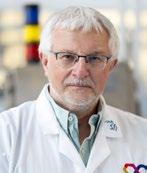
Feature Covers
Cover of Journal of Materials Chemistry B: Michael J. Zaworotko, Anastasios J. Tasiopoulos, Constantina Papatriantafyllopo et al. NUIG4: A biocompatible pcu metal–organic framework with an exceptional doxorubicin encapsulation capacity

Cover of Crystal Growth & Design: Protein Frameworks with Thiacalixarene and Zinc, Ronan J. Flood, Kiefer O. Ramberg, Darius B. Mengel, Francesca Guagnini, Peter B. Crowley, Cryst. Growth Des.


Cover of Inorganic Chemistry: Hook, Line, and Sinker! Spectroscopic Studies of Bi-Modular Mono- and Bis1,8-naphthalimide-Ru(bpy)3-conjugates as DNA “Light Switches”. Gary J. Ryan, Thorfinnur Gunnlaugsson, Susan J. Quinn, norg. Chem
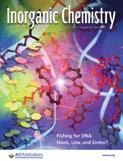
Cover ACS Chemical Neuroscience: Single-Particle Resolution of Copper-Associated Annular α-Synuclein Oligomers Reveals Potential Therapeutic Targets of Neurodegeneration. Olena Synhaivska, Shayon Bhattacharya, Silvia Campioni, Damien Thompson, Peter Niraj Nirmalraj, ACS Chem
Cover Accounts of materials research: Getting the Lead Out: Biomolecular Crystals as Low-Cost, High-Performance Piezoelectric Components. Sarah Guerin, Accounts of material research.
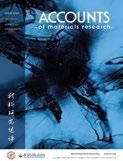

Cover of JACS: Guest Molecule-Mediated Energy Harvesting in a Conformationally Sensitive Peptide–Metal Organic Framework. Yu Chen, Sarah Guerin, Joseph O’Donnell, Pierre-Andre Cazade, Damien Thompson et al.
Cover of ChemComm: On the origin of chaotrope-modulated electrocatalytic activity of cytochrome c at electrified aqueous|organic interfaces. Alonso Gamero-Quijano, PierreAndré Cazade, Shayon Bhattacharya, Damien Thompson, Micheál Scanlon et al.
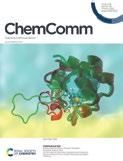

SSPC is committed to translating its excellent science into impact through Sustainability, Small Molecule, Large Molecule, Health and Education and Public Engagement challenge areas.
SUSTAINABILITY
RESEARCH PROJECTS
Key Project:
Amorphous polymeric salts to improve the properties of poorly soluble drugs
Lead: Prof. Lidia Tajber, TCD in collaboration with MSD

The aim of this project is to improve the solubility of drugs, specifically BCS class II and IV drugs, via the new amorphous polymeric salt (APS) formation approach to improving the solubility of drugs. It is crucial that green and sustainable processes are used to produce the APS systems.
By developing mechanochemical processes for drug synthesis, this project has the potential for significant impact on the medical and research world today, as it will lead to a greater understanding of the science behind molecular engineering of improved solubility. This work builds on SSPC and Prof. Tajber’s track record in the area, and the success in the EU COST action MechSusChem. This global work is also aligned with the newly funded Impactive project, under the EU Health call in Green Pharma.
Key Project:
Solid-Phase Synthesis of Peptides and Conjugates
Funding: Prof. Tajber, is now deputy coordinator on an €8M consortium project IMPACTIVE (Innovative Mechanochemical Processes to synthesise green ACTIVE pharmaceutical ingredients)
https://sspc.ie/sspc-investigatorsecures-funding-in-the-greenpharmaceuticals-space



Prof. Marc Devocelle
Solid Phase Peptide Synthesis (SPPS) is best positioned to meet the need for synthetic peptides, which represent one of the fastest growing classes of new drugs. However, its sustainability on an industrial scale is threatened by its reliance on organic solvents such as DMF and NMP, both placed on the Candidate REACh List of substances of very high concern for Authorisation. Led by Prof. Marc Devocelle (RCSI), the greenest option for SPPS, aiming for its implementation in aqueous media, is investigated in this project through the development of a protection and coupling strategies compatible with this solvent.

Key Project: Impurity Formation and Palladium removal
Lead: Prof. Anita Maguire, UCC in collaboration with Eli Lilly


Prof. Anita Maguire
The removal of palladium is often very bespoke or process specific and can struggle to work consistently depending on the molecular species/oxidation state of the spent catalyst. Therefore, there is a need to gain a fundamental understanding of the techniques and technologies suited to remove palladium during the manufacturing step based on solubility studies of spent catalyst and extractions agents. The critical success factor in this work has been the complementarity between the Maguire group, UCC and Eli Lilly. Eli Lilly bring their expertise on process optimization with the Maguire group bringing their expertise on devising synthetic routes to the proposed impurity and developing fundamental mechanistic insights.
FUNDING HIGHLIGHTS

Dr Ger McGlacken, UCC, received funding from SFI Frontiers for the Future for SOSEarth: Sustainable Organic Synthesis using Earth Abundant Metals for Critical Pharmaceutical Transformations Value: €979,586


Dr Peter Byrne, UCC, received funding from SFI Frontiers for the Future for Catalytic Wittig CO2 Utilisation Methodology for Sustainable Production of Carboxylic Acids Derivatives Value: €477,979
PUBLICATION EXEMPLARS
Wilson, B.H.| Vandichel, M.| Zaworotko, M.J.
The First Sulfate-Pillared Hybrid Ultramicroporous Material, SOFOUR-1-Zn, and Its Acetylene Capture Properties. Angew Chem Int Ed Engl. https://doi.org/10.1002/anie.202116145
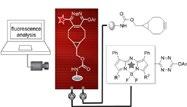
Fitzgerald, S.| O'Shea, D.F.
Continuous Flow Bioconjugations of NIR-AZA Fluorophores via Strained Alkyne Cycloadditions with Intra-Chip Fluorogenic Monitoring**. Chemistry - A European Journal. https://doi.org/10.1002/chem.202104111
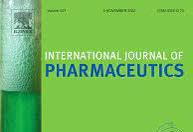
SMALL MOLECULE
RESEARCH PROJECTS
Key Project: Continuous Anti-solvent Cavi-crystallization
Prof. Vivek Ranade, UL, is working with Pfizer on a project focused on continuous antisolvent cavi-crystallisation. The programme is in partnership with the SFI Centre for Smart Manufacturing, CONFIRM, an example of a Centre-to-Centre project. The goal of the research is to develop a systematic methodology for the design, optimisation and scale-up of continuous crystallisers working in combination with hydrodynamic cavitation for realising better control on particle size distribution.
Prof. Vivek Ranade

“We are delighted to be partnering with SSPC and Confirm on a Continuous Anti-solvent Cavi-crystallisation PhD project. It will have significant benefits for Pfizer, having applications in future manufacturing, enabling research and upskilling in new areas and engagement between Pfizer and these two centres.”
 Dr Lorna Moynihan, Pfizer
Dr Lorna Moynihan, Pfizer
Key Project: Zinc Ionophoric activity
Dr Finbarr O’Sullivan, DCU and Dr Robert Elmes, MU are working with Janssen Pharmaceuticals. Zinc is important for proper cell physiology and general health. It has been implicated in processes such as gene expression, cell differentiation and development, cell division (mitosis), cell death (apoptosis), immune response and disease resistance. The program is using novel zinc ionophores to alter cellular zinc levels to and monitoring impact on cellular behaviour and zinc localisation in in vitro models of normal and disease states. The study will form the basis for more advanced in-depth studies focusing on particular mechanisms and pathways identified during these initial experiments and to establish a set of ‘design rules’ for effective Zn2+ ionophoric activity.
FUNDING HIGHLIGHTS
Prof. Marcus Baumann, UCD, received funding from SFI Frontiers for the Future for Continuous Flow Biocatalysis for High Value Products Exploiting Enzyme Cascade Processes





Value: €419,916
Prof. Andrew Kellett, SSPC’s Investigator of the Year at DCU, received an IRC Laureate Consolidator award for ENACT: Gene Editing with Nucleic Acid Click Chemistry
Key Project:

Tumour responsive systems for targeted drug delivery
Prof. Joanna McGouran, TCD is working to develop multifunctional agents for tumour targeted drug delivery with a focus on successfully developing a method to prepare precise enzyme-responsive microstructures.

Developing chemotherapies with increased efficacy and decreased side effects for cancer associated with these tumours has the potential to improve survival rates and reduce suffering during treatment.
Current treatments in cancer chemotherapy are unsatisfactory primarily due to the inability of drugs to distinguish between cancer cells and healthy cells, resulting in a narrow therapeutic window and undesired side effects.
PUBLICATION EXEMPLARS
Monasterolo, C. | O’Gara, R. | Kavanagh, S.E. | Byrne, S.E. | Bieszczad, B. | Murray, O. | Wiesinger, M. | Lynch, R.A. | Nikitin, K. Asymmetric addition of Grignard reagents to ketones: culmination of the ligand-mediated methodology allows modular. Chemical Science 2022, 13, 6262-6269. https://doi.org/10.1039/D1SC06350B

Gorai, T.| Lovitt, J.I. | Umadevi, D. | McManus, G. | Gunnlaugsson, T. Hierarchical supramolecular co-assembly formation employing multi-component light-harvesting charge transfer interactions. Chemical Science, 2022,13, 7805-7813. https://doi.org/10.1039/D2SC02097A

Zotova, J. | Twamley, B. | Tajber, L. Impact of the Dicarboxylic Acid Chain Length on Intermolecular Interactions with Lidocaine.
Molecular Pharmaceutics 2022, 19, 8, 2980–2991. https://doi.org/10.1021/acs.molpharmaceut.2c00381

LARGE MOLECULE RESEARCH PROJECTS


Key Project: Multi-Product Resin Reuse for Biopharmaceutical Manufacturing

SSPC are working with Pfizer, Eli Lilly, Janssen, BMS and MSD to address the global protein A resin shortage on a project led by Prof. Sarah Hudson, UL. Prof. Hudson and her team will investigate the multi-product use of a resin in downstream biopharmaceutical production.


The rising need for early diagnosis of chronic diseases, coupled with growing demand for drugs which work better and have fewer side effects, is largely responsible for the growth of the protein A resin market. At the moment, protein A resin cannot be reused. If BioPharma companies use it with one antibody, they can’t use it with a different antibody. The resins are expensive and in short supply. A current global shortage of protein A resin, is slowing product analysis across the sector, thus increasing the cost and slowing the rate at which new antibody medicines can reach the patient.
Key Project: Development for freeze drying cycle for large volume EntericBio

This project overseen by Prof. Gavin Walker with Serosep aimed evaluate and optimise the efficiency of the current freeze drying cycle of the EntericBio system at Serosep. The identification of bacterial tests currently runs over a 48-hour period and involves the freezedrying of liquid containers. The efficiencies achieved in this project has led to a significant decrease in drying time of from 48 to 24 hours. The process was further optimised to increase the drying volume by 100 fold. The optimised drying cycle of 24 hrs is also fully compliant with the manufacturing process and working shifts of Serosep as the main stakeholder of the project.
FUNDING HIGHLIGHTS
Prof. Ioscani Jimenez del Val, UCD, received funding from SFI Frontiers for the Future for Dial-A-Sugar: Model-Predictive Control of biopharmaceutical glycosylation Value: €477,658

 Prof. Sarah Hudson
Prof. Sarah Hudson
Key Project:
Reconstitution of freeze-dried protein formulations

This research is part of SSPC’s EPSRC-SFI Centre for Doctoral Training (CDT) in Transformative Pharmaceutical Technologies.


Led by Prof. Abina Crean and Dr Sonja Vucen, UCC.

The project initially focused on the reconstitution of freeze-dried protein formulations. Early in the project, it became apparent that the conventional methodology to determine drug product reconstitution time was variable because of the subjective nature of the visual determination. This motivated a collaboration with Drs Krishnakumar Chullipalliyalil and Michael McAuliffe in the Centre for Advanced Photonics & Process Analysis (CAPPA), Munster Technological University. Through this collaboration, a bespoke spectroscopy method was developed which automated reconstitution time determination and reduced variability in measurements. The project has progressed to exploring ways to refine the spectroscopic technique to monitor protein physical stability in-vial.
PUBLICATION EXEMPLARS
P.-A. | Bhattacharya, S. | Guerin, S. | Ghosh, M. | Netti, F. | Thompson, D. | Adler-Abramovich, L. Molecular Engineering of Rigid Hydrogels Co-assembled from Collagenous Helical Peptides Based on a Single Triplet Motif. ACS Applied Materials & Interfaces 2022, 14, 41, 46827–46840. https://doi.org/10.1021/acsami.2c09982
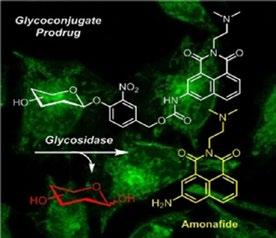
Calatrava-Pérez, E. | Marchetti, L.A. | McManus, G.J. | Lynch, D.M. | Elmes, R.B.P. | Williams, D.C. | Gunnlaugsson, T. | Scanlan. Real-Time Multi-Photon Tracking and Bioimaging of Glycosylated Theranostic Prodrugs upon Specific Enzyme Triggered. Chemistry a European Journal 2022, 23,03. https://doi.org/10.1002/chem.202103858

HEALTH
RESEARCH PROJECTS
Key Project:
Tumour Targeting of an Oxaliplatin / 5FU / Irinotecan based Chemotherapeutic Regimen using Ultrasound Targeted Microbubble Destruction
Platinum-based drugs are used in 50% of anticancer chemotherapeutic regimens. There is a clinical requirement to develop innovative methods for the selective delivery of platinum anticancer drugs. Dr Darren Griffith (RCSI) and Prof. John Callan (Ulster University) developed a single microbubble formulation carrying 5-fluorouridine, irinotecan and oxaliplatin to enable FOLFIRINOX treatment of pancreatic and colon cancer using ultrasound targeted microbubble destruction (UTMD). The use of UTMD to more effectively deliver the chemotherapy components of this toxic cocktail to solid tumours not only enhances efficacy of the regimens but also significantly reduces the overall chemotherapy burden, i.e., side effects. UTMD mediated FIRINOX treatment could find a role in both a neo-adjuvant setting to enable tumour debulking in advance of surgery or as a more tolerable treatment to prolong life in patients with metastatic disease.


Key Project:
Development of novel therapies for the treatment of Aspergillus fumigatus infection
The filamentous fungus Aspergillus fumigatus is a very serious pulmonary pathogen of immunocompromised patients and can cause a wide range of life threatening infections. The emergence of antifungal drug resistance coupled with limited therapeutic options can hinder treatment. In an SSPC supported collaborative study involving RCSI (Dr Darren Griffith, Lewis More O’Ferrell), TCD (Prof. Anne Marie Healy, Brunella Grassiri) and MU Prof. Kevin Kavanagh, Magda Piatek), researchers have evaluated the ability of novel gallium compounds for treating Aspergillus infections. Results indicate that gallium is highly effective against the pathogen and replaces iron in the fungus thus inhibiting a wide range of cellular processes. Novel formulations of gallium have been evaluated for optimising delivery to the pulmonary surface and show good potential for the treatment of Aspergillus colonising the surface of the lung. Gallium complexes have a distinct mode of action to the conventional antifungal agents by exploiting nutritional vulnerabilities. Consequently, these novel complexes may represent a less-toxic and safer anti-Aspergillus therapy in the future.
 Dr Darren Griffith
Dr Darren Griffith
Key Project: Key Projects in in modelling solving problems in health
Prof. Damien Thompson

SSPC are developing and applying bespoke multi-scale modelling methods to solve problems in health spanning a broad range of disease targets. Recent examples include molecular modelling-guided precise characterisation of fibril growth in neurodegenerative disease to better stratify and diagnose patients, in collaboration with experimentalists at EMPA Switzerland. Our DFT models guide the rational design of cocrystal formulations that are more tablettable and show higher solubility and higher efficacy in vivo, in collaboration with groups including Prof. Mike Zaworotko’s crystal engineering team at UL and the Gazit lab at Tel Aviv University. As a final example, we work with Dr Agnes Banreti at Institute of Biology Valrose at the University of Cote d’Azur to develop new drug targets based on modelling chiral defects in peptides associated with defective cellular processes, diseases and ageing.
PUBLICATION EXEMPLARS FUNDING HIGHLIGHTS
Dully, S Bhattacharya | V Verma | D Murray | D Thompson | T Soulimane
Balanced lipase interactions for degradationcontrolled paclitaxel release from lipid cubic phase formulations
Journal of Colloid and Interface Science 2022, 607, 978-991.
https://doi.org/10.1016/j.jcis.2021.09.024
S Javan Nikkhah | PA Cazade, JJ McManus | D Thompson.
Design Rules for Antibody Delivery by SelfAssembled Block-Copolyelectrolyte Nanocapsules


Macromolecules 2022, 55 (7), 2383-2397
https://doi.org/10.1021/acs.macromol.2c00118
Dr Anne Moore, UCC, received funding from SFI Frontiers for the Future for Induction of Broad Systemic and Mucosal Immune Responses by Noninjected Stable Vaccines

Value: €886,739
Prof. Vivek Ranade, UL, received funding from SFI Frontiers for the Future for ‘Factory in a Box’ for Personalised Products based on Emulsions [FabPRO] Value: €988,667


EDUCATION AND PUBLIC ENGAGEMENT (EPE)
Our research impacts society by improving and advancing the sustainable production and the availability of medicines globally. SSPC’s research-based EPE programme enables the Centre to work with community partners to deepen their understanding of and engagement with SSPC research. SSPC plays a leadership role in bringing together international partnerships to advance these aims.
SSPC EPE BURSARY HIGHLIGHT
Dr Jerry Reen, UCC, received an SSPC Bursary for his project on An Immersive Journey from Code to Therapy. Biotechnology has delivered ground-breaking advances for society through decades of development and innovation. Through this bursary, Jerry and his team will work with schools to develop bespoke multi-lingual immersive VR simulations. These will focus on the production of therapeutics using biotechnology, supporting engaged and digitally-savvy society and a highly-skilled workforce throughout Ireland.
 Dr Jerry Reen
Dr Jerry Reen
EU PROJECT HIGHLIGHT
ESTA Project: Educating Science Teachers for All (ESTA) is an EU ERASMUS+ funded project across 8 partners in 5 countries valued at €967,805, which kick started in 2021. SSPC partners with colleagues in the School of Modern Languages and Applied Linguistics, and with EPI•STEM. The ESTA project’s overall aim is to develop more responsive and inclusive science education by developing training programmes for pre- and in-service science teachers to include issues of cultural diversity and linguistic heterogeneity.

EPE RESEARCH PUBLICATIONS
Mackey, K., McHugh, M., and McGlacken, G. P.
Some people and personalities of organic chemistry: a teaching hook for mid-level university students. (2022) Chemistry Teacher International
A collaboration between UCC and the SSPC EPE team, the paper hones in on the use of hooks and storytelling in third level chemistry education.
https://doi.org/10.1515/cti-20210037
Flynn, Paul, Martin McHugh, Veronica McCauley, and Tony Hall Design-based Research.
In Perspectives in Contemporary STEM Education Research, pp. 92-100. Routledge.
This chapter published on Design-Based Research, is a collaboration with UG.
McHugh, M, Hayes, S., Tajber, L. & Ryan, L.
Medicine Maker: An Outreach Activity for Pharmaceutical Manufacturing and Health Literacy (2022) Journal of Chemical Education.
A collaboration between TCD and SSPC’s EPE team, this paper outlines the design and development of our public engagement workshop: Medicine Maker.
https://pubs.acs.org/doi/10.1021/ acs.jchemed.1c00915

TALENT
SSPC attracts talent worldwide and creates PhD graduates and postdoctoral researchers with specific disciplinary expertise, coupled with a broad understanding of related disciplines across pharmaceutical science and manufacturing.
Current Numbers:
A key impact of the Centre is the creation of a unique talent pipeline for the biopharmaceutical sector. The transition rate of our researchers to industry is 65%. A key driver of this is our PhD industry placement programme.
A critical aspect for us is to embed a culture of entrepreneurship and commercialisation in our Early Career Researchers (ECR). To promote this, our ECR summit held in December, focused on entrepreneurship, building upon the Centre’s spin-out ecosystem to maximise the economic impact of our research programme.
Anne


INDUSTRY ENGAGEMENT
Since its inception, SSPC has successfully collaborated with over 46 industry partners, composed of indigenous and foreign operations, whose size range from small to multi-national.
Our industry partners benefit from the depth and breadth of expertise available within SSPC. Through collaboration, SSPC augments the R&D capabilities of companies, while increasing opportunity for technology transfer and commercialisation.

SSPC supports an industry membership model providing many benefits including access to training, ability to host a PhD student placement, gateway to a talent pipeline and the opportunity to network and collaborate with both the Centre’s academic and industry community. In 2022 the Centre expanded its member base to include eight new industry partners.


INDUSTRY MEMBERS INDUSTRY NON-MEMBERS
COLLABORATIVE ACADEMIC-INDUSTRY PROJECTS



Thirteen collaborative research projects were initiated this year with SSPC members Eli Lilly, Janssen, MSD/ Merck US, Canty, Boston Scientific, Theradep and Varda Space Industries. These research projects bring together complementary interdisciplinary skills from across our partnering academic institutions.
WORKING WITH US
If you’d like to know more contact our Industry Engagement Manager aisling.arthur@ul.ie or our Business Development Manager Jamie.guidera@ul.ie


INDUSTRY PROJECT SPOTLIGHT
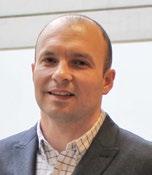
Identification of biopharmaceutical drug substances using non-destructive Raman spectroscopy

This project is a Sanofi-UL project led by Prof. Sarah Hudson


Prof. Sarah Hudson Prof. Norma Bargary
Challenge: Many biopharmaceutical products have a frozen intermediate step for drug substance (DS) prior to Fill Finish Manufacturing, often DS is shipped in multiple containers from the DS site to the Dug Product (DP) site and as per the orange guide for parenteral biopharmaceuticals, each container is required to be identified. This usually requires liquid state sampling and testing which can lead to significant product waste over time.
Solution: The SSPC team developed a non-destructive method to ID frozen bulk providing the following improvements to the manufacturing process. This project integrated the Raman spectroscopy and with the expertise of the data science group led by Prof. Norma Bargary to reduce the dimentionality of a data set while preserving as much variability (statistical information) as possible. This resulted in an innovative model for implementation by Sanofi.
Learn more about our projects at https://sspc.ie/industry/industry-projects/
COMMERCIAL SPOTLIGHT
Winner of the Pharma Awards Innovation of the Year 2021 and 2022: Dr Waleed Faisal, UCC, received award for the Microneedle ArrayPatch (MAP), a propriety wearable microneedle patch technology designed to treat local diseases. Dr Luis Padrela, UL, received the award in celebration of his technology developed through CM-NANO. Life-saving cures are not reaching patients due to high failure rates at pre-clinical trial stage. Nanotechnologies hold a great promise to overcome these chemical barriers.
PUBLICATION SPOTLIGHT
A collaboration between PMBrC, SETU, Waterford, University of Limerick and Sanofi. Elsiddig, R. | O’Reilly, N.J. | Hudson, S.P. | Owens, E. | Hughes, H. | O’Grady, D. | McLoughlin, P.
The influence of poly(allylamine hydrochloride) hydrogel crosslinking density on its thermal and phosphate binding properties.

International Journal of Pharmaceutics 2022. https://doi.org/10.1016/j.ijpharm.2022.121806
A collaboration between Graz University of Technology, Pfizer UK, SSPC, University College Cork, University of Parma, Research Center Pharmaceutical GmbH, ClinSearch, CMAC, University of Hertfordshire, Aston University, School of Industrial Biology. Stegemann, S. | Sheehan, L. | Rossi, A. | Barrett, A. | Paudel, A. | Crean, A. | Ruiz, F. | Bresciani, M. | Liu, F. | Shariff, Z. | Shine, M. | Schmelzer, C. | Pense-Lheritier, A.-M.
Rational and practical considerations to guide a target product profile for patient-centric drug product development with measurable patient outcomes – A proposed roadmap.
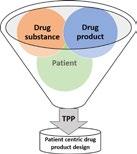
European Journal of Pharmaceutics and Biopharmaceutics 2022. https://doi.org/10.1016/j.ejpb.2022.06.006
 Dr Waleed Faisal Dr Luis Padrela
Dr Waleed Faisal Dr Luis Padrela
